@francis.tec/npmvet v0.1.6
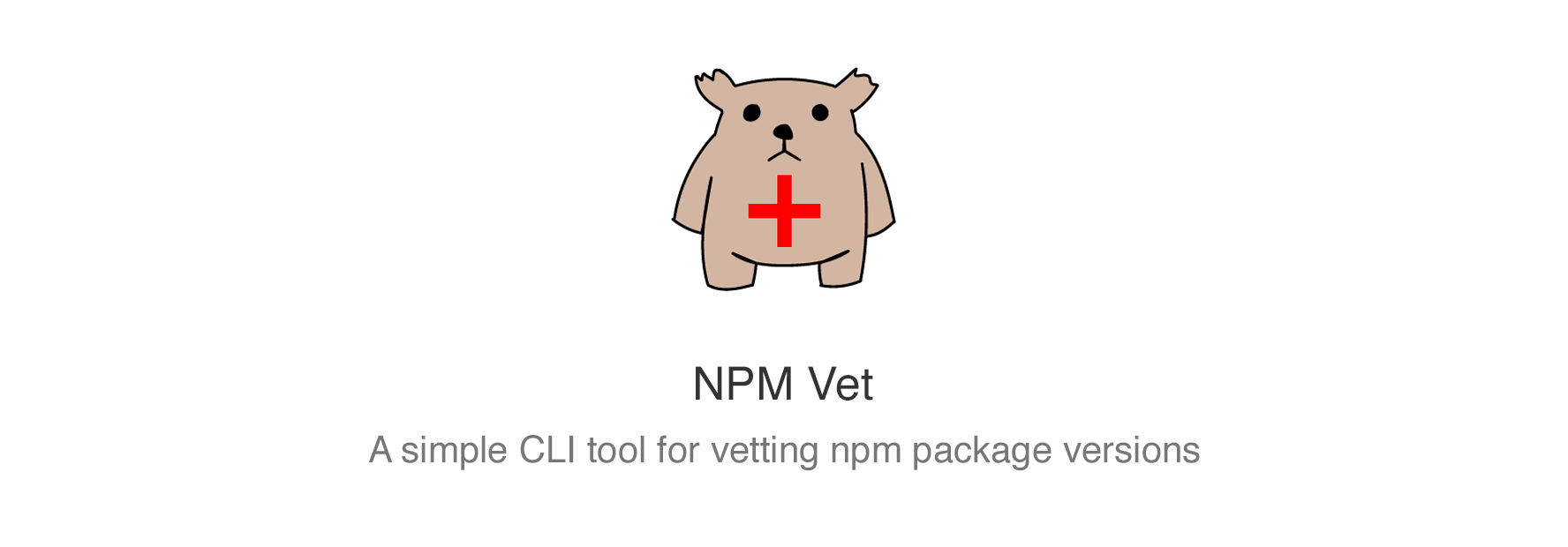
NPM Vet is a simple CLI tool to help vet your npm package versions. NPM Vet can be used locally, or as a CI build-step to prevent builds passing with mismatched package versions. To read more about NPM Vet, visit the Hark website.
Installation
$ npm install npmvet -gUsage
Usage: npmvet [options]
Options:
-h, --help output usage information
-V, --version output the version number
-p, --package <package> package.json file location (Default: .)
-m, --modules <modules> node_modules folder location (Default: .)
-r, --renderer <renderer> Renderer to use (Default: inlinetable)
-s, --strict Using the CI renderer, fail build if any packages unlocked (Default: false, flag)Strict Mode
If you're using the CI renderer (see below) the -s flag will enable strict mode. In which builds will fail if versions are unlocked, not just unmatching.
Renderers
Renderers are used to dictate how to output the data NPM Vet collects. The default is inlinetable.
Inline Table
$ npmvet -r inlinetableThe default renderer, inlinetable will print a table inline with your current process. You can use this locally to visualise package differences.
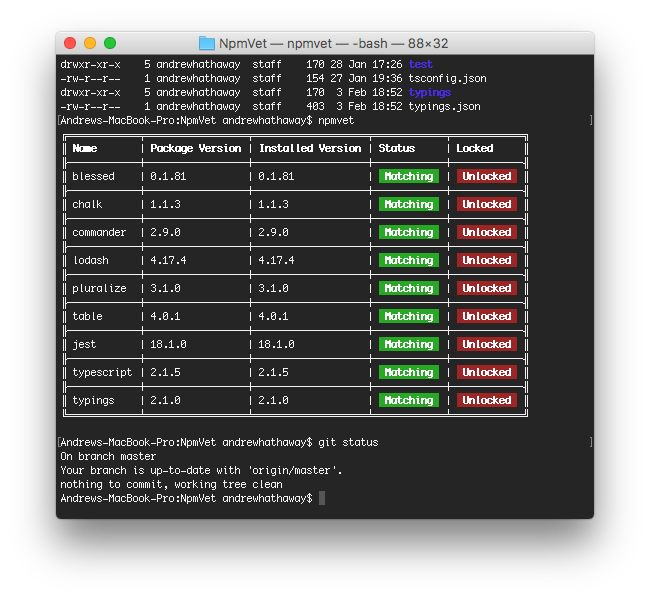
CI
$ npmvet -r ciTo prevent your CI builds passing with mismatched package versions, use the CI renderer. If any package version mismatches are found, the build will fail:
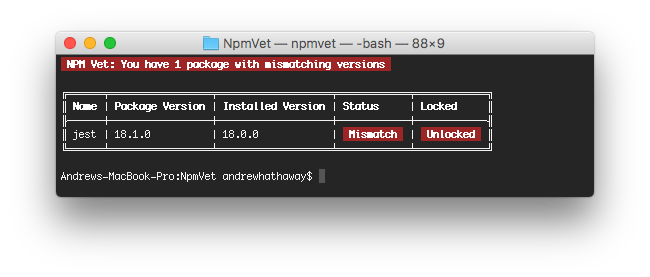
Or if there are no mismatching package versions, your build will continue (and hopefully pass!):
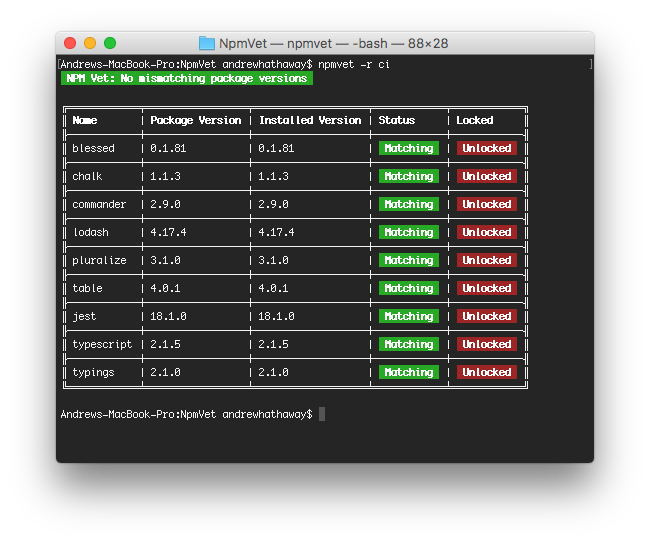
Blessed
The blessed renderer will render a table inside a screen, that has be exited by the user to escape.
$ npmvet -r blessed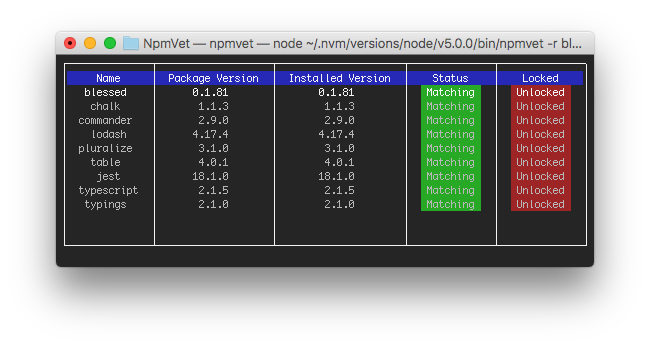
JSON
The JSON renderer will print a JSON array with match information for each package.
$ npmvet -r json[
{
"name": "blessed",
"packageVersion": "0.1.81",
"installedVersion": "0.1.81",
"matches": true,
"locked": false
},
{
"name": "chalk",
"packageVersion": "1.1.3",
"installedVersion": "1.1.3",
"matches": true,
"locked": false
},
{
"name": "jest",
"packageVersion": "18.1.0",
"installedVersion": "18.1.0",
"matches": true,
"locked": false
}
]Contributing
For information regarding contributing to this project, please read the Contributing document.